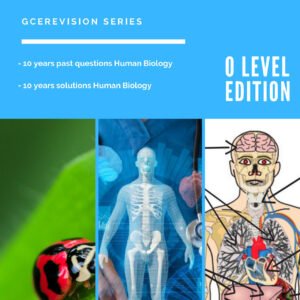CHAPTER TWO
2. CLASSIFICATION OF LIVING ORGANISMS
There are a million of organisms on earth, many look similar while others look different in order to recognize them we have to classify them or group them according to the different characteristics.
Formally all living organisms were put into two main groups by CAROLLUS LINAEUS and this two groups were plants groups and animal kingdom. Modern classification has put all living things into 5 kingdoms. This was done by ROBBERT WITTAKER. The 5-kingdom system are as follows
- Kingdom Monera: these are of unicellular organism with no true nucleus e.g. bacteria, blue-green algal.
- Kingdom protoctista: These are unicellular organism which have a true nucleus containing a nuclear membrane e.g. Amoeba.
- Kingdom fungi: these are multicellular organisms with a true nucleus but they do not have chlorophyll and so can not manufacture their own food e.g. mushroom, Yeast, bread mold, puff balls.
- Kingdom plantae: these are multicellular organisms which have chlorophyll that is they can manufacture their own food.
- Kingdom Animalia: these are multicellular organisms they are animals that cannot make their own food because they have no chlorophyll e.g. Ant, dog, man.
The study of principles of classification is called TAXONOMY or SYSTEMATICS. Carolus Linnaeus divided the kingdom into smaller groups to form a hierarchy as follows
- KINGDOM
- PHYLUM
- CLASS
- ORDER
- FAMILIES
- GENUS
- SPECIE
Linnoeus gave each organism a genus name and a specie name. The genus name is written beginning with a capital letter while the specie name is written beginning with a smaller letter. this method of giving organism two names (genus and specie name) is called BINOMEN NOMENCLATURE e.g. human being Homo Sapiens
| KINGDOM | COMMON NAME | PHYLUM | CLASS | SCIENTIFIC NAME |
|---|---|---|---|---|
| Fungi | Mushroom | Mycophyta | mycophyceat | Angus Compestris |
| Protoctista | Amoeba | Rhizopoda | Sarcodina | Amoeba proteus |
| Protoctista | Euglena | Euglenophyta | Euglenophyceae | Euglena Viridis |
| Animalia | Black rat | Chordata | Mammalia | Rattus rattus |
| Animalia | Dog | Chordata | Mammalia | Canis Familiaris |
| Animalia | Liver Flue | Platyhelminthes | Trematoda | Fasciola hepatis |
| Animalia | chicken | Chordata | Aves | Gallus gallus |
| Animalia | Frog | Chordata | Amphibian | Rena temporaria |
| Animalia | Cray Fish | Arthropoda | Crustacea | Cabarrus afinis |
| Animalia | Cockroach | Arthropoda | Insecta | Periplaneta americana |
| Plantae | Scot pine | coniferophyta | Gymnospermae | Pinus sylvestris |
| Animalia | House fly | Arthropoda | Insecta | Musca domestica |
| Animalia | Domestic fowl | Chordata | Aves | Gallus gallus |
| Protoctista | Amoeba | Rhizopoda | Sarcodina | Amoeba proteus |
| protoctista | paramecium | ciliophora | ciliata | p.cautatum |
| Monera | Bacteria | Eubacteria | schizomycete | Ecoll |
| fungi | mould | Zygomycota | zygomycota | Rhizopus nigricons |
| Common name | Scientific name |
|---|---|
| Garden snail | Helix aspersa |
| crayfish | Cambarus affinis |
| Earth worm | Lumbricus terrestris |
| millipede | Julus virgatus |
| centipede | Cermatia forcepts |
| Garden spider | Mirada auranta |
| Black cockroach | Blatta orientalis |
| Grasshopper | H. nitidulus |
| Butterfly | Papilon de odocus |
| Head louse | Pediculus capitis |
| Body louse | Pediculus corporis |
| Public louse | Pediculus pubis |
| Tilapia | Tilapia zilli |
| Mackerel | Scomber scombrus |
| Lizard | Agama agama |
| Paw-paw | Carica papaya |
| Eru | Gnetus Africanum |
| Water leaf | Talignum trianglaire |
| Manyo | Magnifera Indica |
| Rice | Oryzia satiua |
| Cassava | Manihot utilisima |
| Bitter leaf | veronia |
| Coconut | Coscos nucifera |













Mbun Tangwe Ryan Mbun Tangwe Ryan
December 1, 2018
why can't I download this?